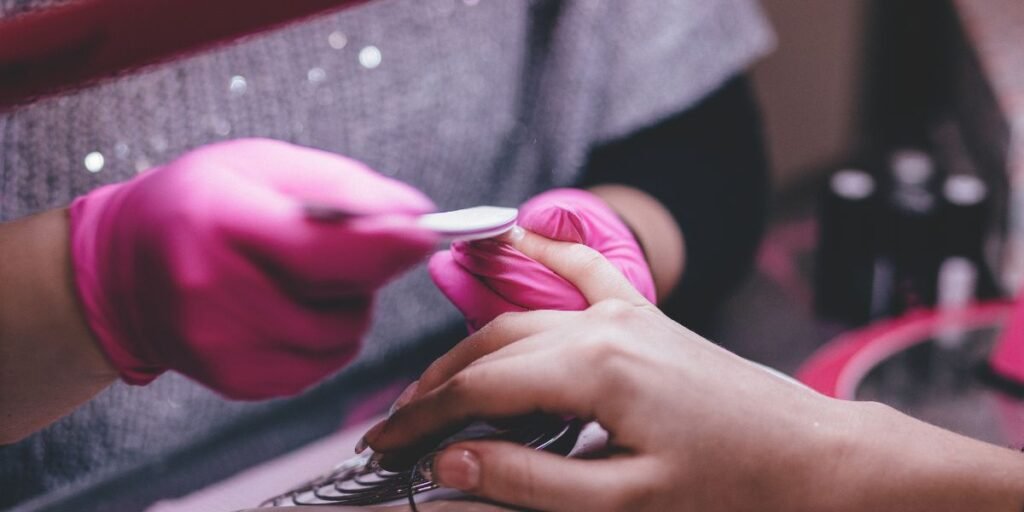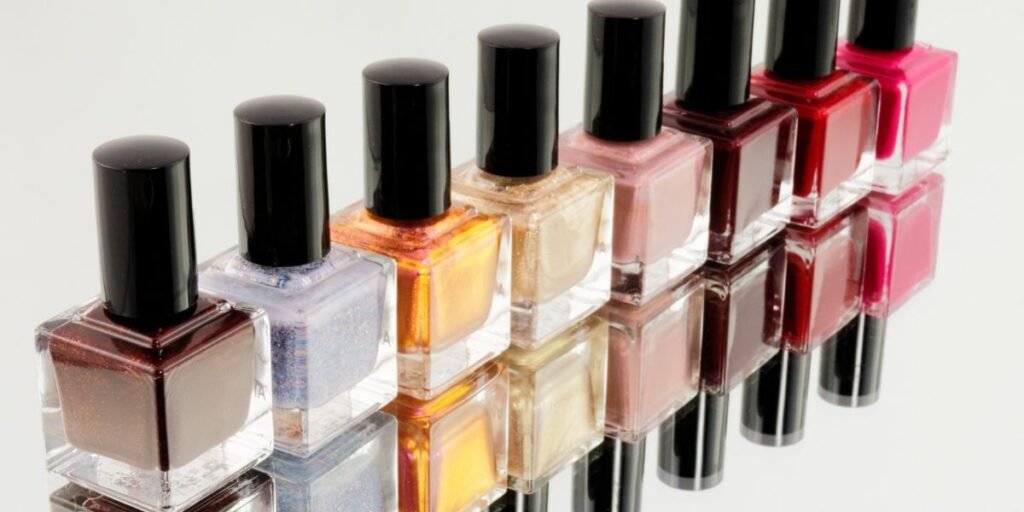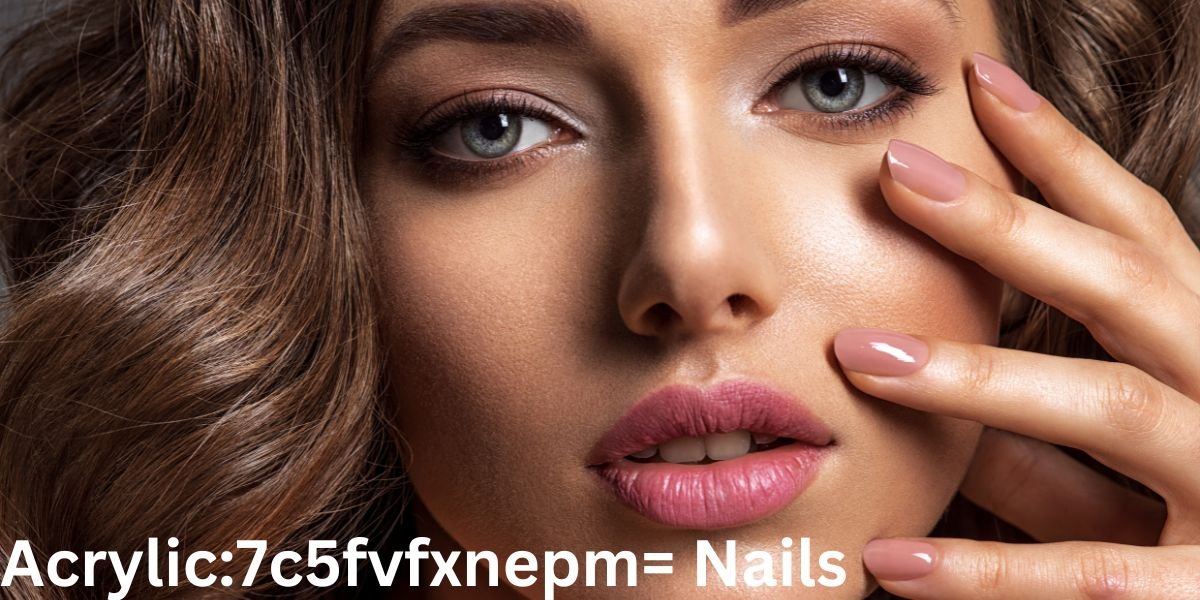Acrylic:7c5fvfxnepm= Nails: Stylish and Durable Manicures
Acrylic:7c5fvfxnepm= Nails have revolutionized the world of manicures, offering a durable and stylish option for those seeking to enhance the look of their natural nails. They are made by combining a liquid monomer with a powder polymer to create a strong, protective layer that can be shaped, colored, and designed in countless ways. Ideal for anyone looking to add length, strength, or a touch of creativity to their nails, acrylics are versatile and can be tailored to suit personal preferences, from classic French tips to bold, intricate nail art. With their long-lasting finish and ability to withstand daily wear and tear, acrylic nails have become a go-to choice for nail enthusiasts who want a polished, salon-quality look that lasts for weeks. In this comprehensive guide, we’ll delve into the benefits, application process, maintenance tips, and everything you need to know to make the most of your acrylic nail experience.
What Are Acrylic Nails?

Acrylic nails are a popular type of artificial nails that provide a stylish and polished look for your hands. They are made by combining a liquid monomer and a powder polymer, which together form a paste that is applied to the natural nail or a nail extension. The mixture hardens when exposed to air, creating a durable and glossy finish. Acrylic nails can be customized in various shapes, lengths, and designs, making them a favorite choice for those who want a versatile and long-lasting manicure.
The Benefits of Acrylic Nails
One of the main benefits of acrylic nails is their strength and durability. Unlike natural nails, acrylic nails are less prone to chipping and breaking, making them ideal for people with weak or brittle nails. They also offer a smooth surface that can be painted with intricate designs, enhancing the overall appearance. Additionally, acrylic nails can be shaped and styled to suit individual preferences, from classic square or oval shapes to trendy almond or stiletto styles. For individuals looking to grow their natural nails, acrylics can also act as a protective layer, allowing the underlying nails to grow without damage.
The Application Process for Acrylic Nails

The application process of acrylic nails involves several steps to ensure a smooth and polished finish. It begins with cleaning and preparing the natural nails by pushing back the cuticles, trimming, and lightly buffing the nail surface. Next, a primer is applied to the nails to ensure better adhesion. The technician then dips a brush into the liquid monomer and then into the acrylic powder to create a small bead of paste. This paste is applied to the nail, shaped, and smoothed out. After the acrylic has hardened, the nails are filed and buffed to the desired shape, and a top coat is applied for added shine and protection.
Tips for Maintaining Acrylic Nails
Maintaining acrylic nails requires some special care to keep them looking their best. To prolong the life of your acrylics, it’s essential to avoid using your nails as tools to open cans or scratch surfaces, as this can cause them to chip or break. Regularly applying cuticle oil helps to keep the cuticles and surrounding skin moisturized, preventing dryness and lifting of the acrylic. It’s also important to schedule regular fills every 2-3 weeks to maintain the appearance of the nails as they grow out. Using gentle, non-acetone nail polish removers is also recommended to avoid weakening the acrylics.
How to Remove Acrylic Nails Safely
Removing acrylic nails safely is crucial to prevent damage to your natural nails. It is best to have them removed professionally by a nail technician. However, if you need to remove them at home, you can do so by soaking your nails in acetone. Start by filing off the top layer of the acrylic to help the acetone penetrate better. Then, soak a cotton ball in acetone, place it on the nail, and wrap each finger in aluminum foil. After about 20-30 minutes, gently push off the softened acrylic using a cuticle pusher. Always moisturize your hands and nails after the process to replenish lost moisture.
The Science Behind Acrylic Nails

Acrylic nails are based on a chemical reaction called polymerization. When the liquid monomer is mixed with the powder polymer, it creates a chain reaction that forms a hard, plastic-like material. The process involves the monomer molecules bonding with the polymer molecules to form a strong and flexible structure. This reaction happens quickly, which is why acrylic nails harden within minutes of application. The result is a durable and protective coating that can withstand everyday wear and tear, making acrylic nails a popular choice for long-lasting manicures.
Benefits of Choosing Acrylic Nails
Choosing acrylic nails has numerous benefits, including their versatility, strength, and customizability. Acrylic nails are suitable for individuals with short or damaged nails, as they provide an instant length and uniform shape. They are also highly versatile in terms of design, allowing users to opt for simple, elegant looks or more intricate, artistic designs. Furthermore, acrylic nails are durable and can last for several weeks with proper care, making them a cost-effective choice for people seeking long-lasting manicures.
Durability and Longevity

Acrylic nails are known for their remarkable durability and longevity. They can withstand daily activities that might damage natural nails, such as typing or household chores. With proper maintenance, acrylic nails can last up to 4-6 weeks before needing a full replacement, though regular fills every 2-3 weeks help maintain their appearance and prevent lifting.
Application Process for Acrylic:7c5fvfxnepm= Nails
The application process is straightforward but requires precision. Here’s a breakdown:
Preparation
- Cleaning: The natural nails are thoroughly cleaned to remove any dirt or oils.
- Cuticle Care: The cuticles are pushed back to create a clean surface.
- Buffing: The nail surface is lightly buffed to help the acrylic adhere better.
- Primer Application: A primer is applied to enhance adhesion.
Maintenance Tips for Acrylic:7c5fvfxnepm= Nails
Maintaining acrylic nails involves both daily care and periodic professional attention.
Daily Care
- Moisturize Regularly: Keep your cuticles hydrated with cuticle oil.
- Avoid Harsh Chemicals: Use gloves when handling cleaning agents to prevent weakening the nails.
- Regular Fills: Visit the salon every 2-3 weeks to fill in the gap as your natural nails grow.
Potential Concerns with Acrylic:7c5fvfxnepm= Nails
While acrylic nails are generally safe, there are potential concerns to be aware of:
Common Issues
- Nail Damage: If removed improperly, acrylic nails can damage the natural nail underneath.
- Infections: Poor hygiene during application can lead to bacterial or fungal infections.
- Allergic Reactions: Some individuals may experience allergic reactions to the chemicals used in acrylics.
Professional Removal Acrylic:7c5fvfxnepm= Nails
Visiting a nail salon for removal is recommended to prevent damage. The technician will typically soak the nails in acetone and gently remove the acrylic with minimal pressure, followed by moisturizing treatment.
Conclusion
Acrylic nails are a popular choice for those seeking long-lasting, customizable, and beautiful manicures. Their strength and versatility make them ideal for various nail designs and lengths. However, proper application, maintenance, and removal are essential to prevent potential issues and ensure the health of your natural nails. By following the recommended care tips, you can enjoy stunning acrylic nails while keeping your natural nails protected and healthy.
Read Also: NshorseScreen: The Ultimate Equine Management Platform for Seamless Horse Care
FAQs
How long do acrylic nails last?
With proper maintenance, acrylic nails can last up to 4-6 weeks, with fills needed every 2-3 weeks.
Are Acrylic:7c5fvfxnepm= Nails safe?
Yes, when applied and removed correctly by a professional, they are generally safe. However, improper handling can cause damage.
Can acrylic nails damage natural nails?
If not removed properly, acrylic nails can damage the natural nails by thinning or peeling them.
How often should I get fills for acrylic nails?
It is recommended to get fills every 2-3 weeks as your natural nails grow.
Can I apply Acrylic:7c5fvfxnepm= Nails at home?
While it is possible, it’s best to have them applied by a professional to ensure proper technique and prevent damage.

